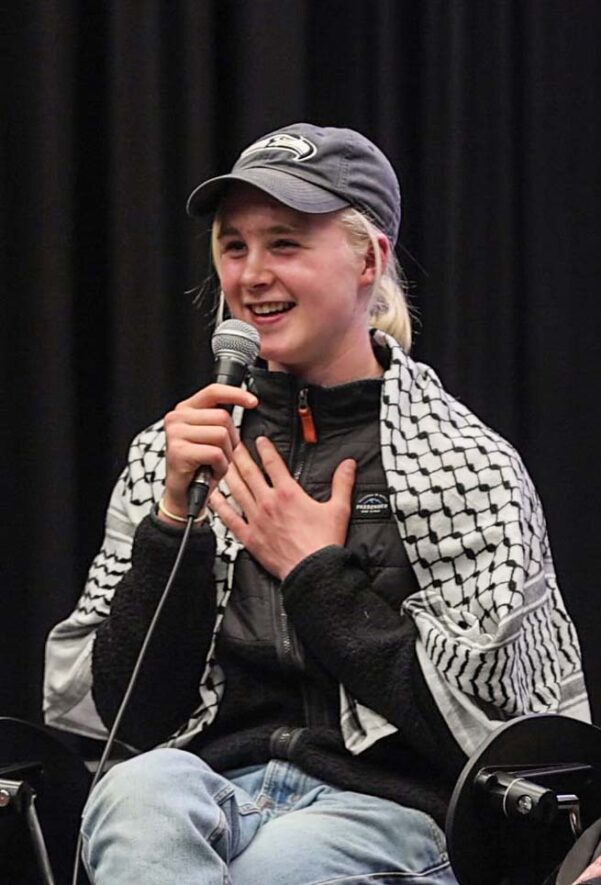 Bass Coast Community Meets the Rising Tide
Bass Coast Community Meets the Rising Tide
by Laura Brearley 26 September 2024 Images Terry Melvin
Over seventy people attended the Rising Tide event held last night at the Newhaven College Performing Arts Centre. It was an inspiring, intergenerational gathering led by School Strike 4 Climate students, with supporting adults. Joey Thompson, the 17-year-old local community activist who is a living example of courage-in-action, played a strong leadership role in bringing it all together.
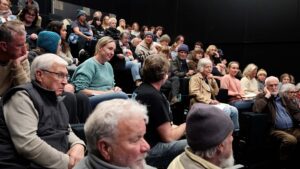
The meeting included screenings of a film about environmental activism and the Whitehaven Coal Mine ‘Walanbaa Ngiiyani/Stronger Together’ and Rising Tide’s documentary ‘The First Wave’ about the 2023 People’s Blockade of the shipping channel in Newcastle. As well as the film screenings, there was live music, a community meal, energetic conversations and a panel discussion led by Rising Tide’s Jamie Longmuir. Panel members were Joey Thompson, environmental activist and School Strike 4 Climate leader; Dr Laura Brearley, PICS committee member, environmental artist and educator; Oliver Jobe, passionate community advocate and Y10 student at Bass Coast College and Tylah Meunir, a local ecologist and CFA volunteer.
The panel and Q and A session covered topics such as the urgency of the need to stop mining and exporting coal, how to talk to people about climate change and the importance of creativity in environmental action. Joey highlighted the urgency of the issue and spoke about the decision announced this week by Environment Minister Tanya Plibersek to approve three massive new coal mine expansions.
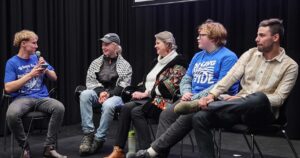
L to R Jamie Longmuir, Joey Thompson, Laura Brearley, Oliver Jobe, Tylah Meunir
https://www.abc.net.au/news/2024-09-24/federal-government-approves-coal-mine-extensions/104391416
The Rising Tide gathering was attended by local families, school students and members of environmental groups from across Bass Coast, including Phillip Island Conservation Society, Totally Renewable Phillip Island, Phillip Island Land Alliance, South Gippsland Conservation Society, Save Western Port Woodlands and Bass Coast Climate Action Network. Bass Coast Shire Councillors, Cr Michael Whelan and Cr David Rooks attended, as well as Community Independent Candidate for Monash, Deb Leonard and Council candidate Matt Morgan.
Rising Tide is well on the way to meeting its goal of attracting 10,000 people over 10 days to the People’s Blockade in Newcastle 19th – 25th November, followed by the Canberra Wave 26th – 28th November. https://www.risingtide.org.au/
Last night’s event inspired a strong groundswell of community support from across Bass Coast and was an effective launch of a local hub of interest for the upcoming People’s Blockade of the world’s largest coal port.
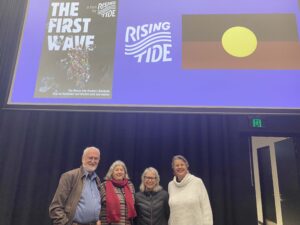
L to R PICS Members, Greg Johnson (President), Michelle Maes, Sharyn Cornthwaite and Laura Brearley
I was part of a number of conversations last night that began with the question: “Are you going to go the Blockade?” On the strength of seeing the ‘The First Wave’ film a couple of days ago and learning more about Rising Tide, Terry and I have decided to go the Blockade in November and then on to Canberra. Young people are leading the way and we want to do all we can to support them at this crucial time, when the future of the planet hangs so precariously in the balance.
The courage and creativity that was shown in both the films we saw last night, were also on display in the community that came together. Led by young people, it was a gathering of people who understand the urgency of the ecological challenges we are all facing and who recognise the importance of the strong community connections needed to be able to sustain the work.
In Bass Coast, we are experiencing the direct consequences of rising sea-levels in the coastal erosion of our beaches such as Inverloch, Silverleaves and the Corinella foreshore. We also have first-hand experience of the community, against-all-odds victory in the fight to protect Western Port (Warn Marin) from the proposed AGL Gas Jetty and Pipeline. We saw the nexus between well-organised strategic alliances, fierce protective love of place and political will.
As Terry and I arrived home last night, to our delight, we saw a shearwater next to the driveway of our Cape Woolamai home. Our first sighting of the season. Right on schedule, this little bird had successfully made it safely back home from its 15,000 kilometre flight from the Bering Sea near Alaska. Another example of courage-in-action and a reminder of the seasons and cycles of the Living World that we need to protect and preserve.
It’s enough to make you want to cry and laugh and head up to Newcastle in November.
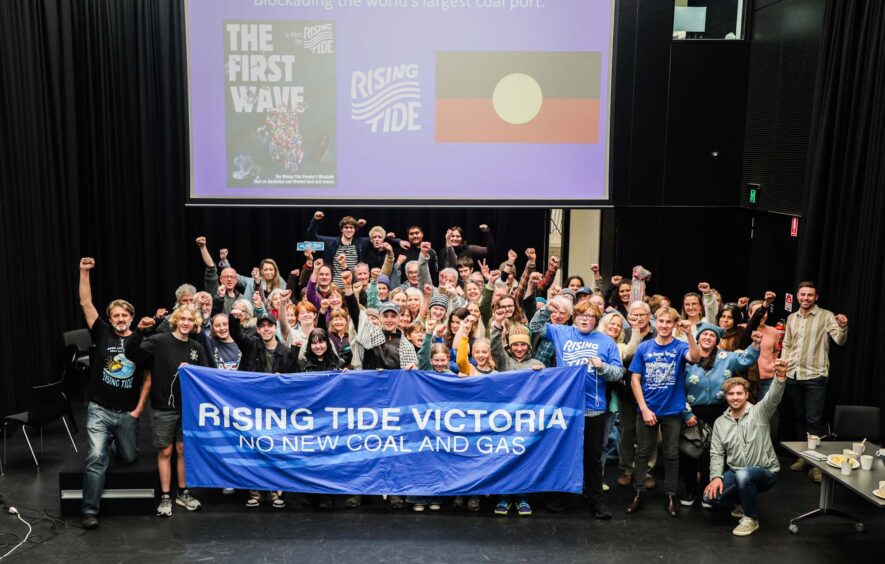
Rising Tide Film Event Newhaven College

